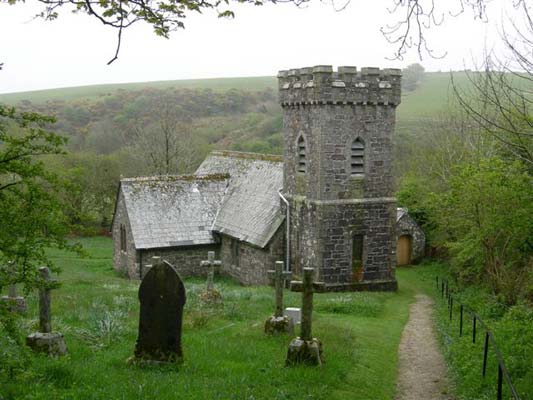Temple Church, Kernow's Gretna Green!
Temple Church is situated in the small remote hamlet of Temple on Bodmin Moor between Bodmin and Launceston, and lies within the parish of Blisland, it is bounded on the east by the village of St Neot, and to the south by Warleggan and Cardinham.
The village derives its name from the twelfth century hospice founded by Knights Templars on land owned by them at to provide refuge for pilgrims and travellers, en route to the Holy Land. The earliest mention of the site is in the Domesday Book of 1086 when it was recorded as Nietstou. On the outskirts of the hamlet is a small granite outcrop known as 'Temple Tor'.
It became famous as a place where marriages could be performed without banns or licence (similar to Gretna Green until the early twentieth century). Writer John Norden, visiting the church in 1584, described it as "a lawless church where many bad marriages are consummated ad where are wonte to be buried such as wrought violent death upon themselves ". This was to ended in 1744 when the church first came under episcopal jurisdiction. By the mid nineteenth century, the building stood in ruins with an ash tree growing in the floor. The church was rebuilt by Silvanus Trevail, the most prominent Cornish architect of the nineteenth century, in 1883.
The church still contains several references to its links with the Knights Templar, including a cross pattée in the east window and a depiction of a mounted knight who is bearing a shield emblazed with a cross (pictured left) in the north window of the church tower.
To the right of the church porch stands a small outhouse in which several old crosses and gravestones have been built into the fabric of its wall. These items were discovered when the church was restored. One of these crosses is an incised Patriarchal Cross, in AD 451 the Archbishop of Jerusalem was made a Patriarch and its use was later granted to the Knights Templar. The Duke of Lorraine, Godefroy Boullion used the Patriarchal Cross on his standard during the capture of Jerusalem which lead to its alternative name - the Cross of Lorraine.






